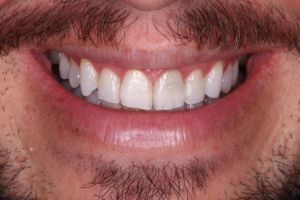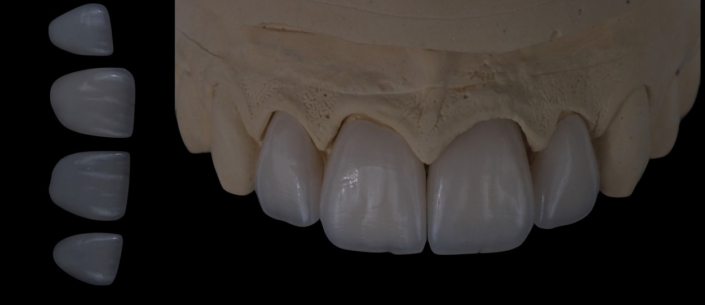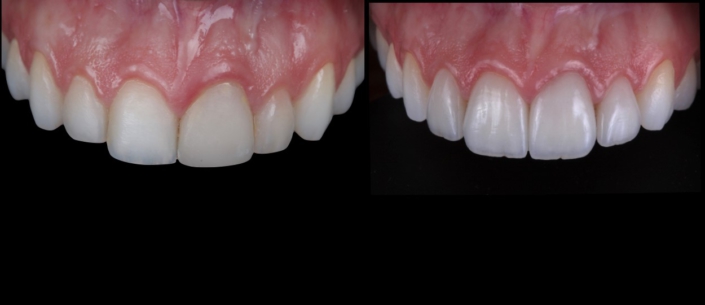Dentistry is in constant evolution. Besides caring for oral health, the world has been seeing tools that allow for new treatments for the smile esthetics.
There has been a boom in the search for veneers and no-prep veneers. Those procedures require correct recommendation and guidance. Among the materials available, there are composites, for the manufacture of direct veneers and ceramics for the manufacture of no-prep and indirect veneers.
Direct veneers in composite x indirect veneers in ceramics
The choice for the material to be used goes beyond the financial aspect. Direct procedures with composite are normally less expensive if compared to indirect procedures using ceramics. However, they have specific clinical recommendations.
Patients who are worried about teeth abrasion may opt for esthetic procedures with composite, since those will adapt to any structure. Direct veneers in composite are made directly on the tooth (hence their name), cover all the frontal surface (vestibular) of the tooth and depend on the technical ability of the professional for the correct accommodation and stratification of the composite. Several colors and opacities are available, making it possible to reproduce the correct opalescence and reflection/passage of light in each dentin structure.
Presently, with premium composites (such as Vittra APS – FGM) we can achieve excellent durability in the procedures. For having spherical and smaller particles, the polishing with Vittra APS guarantees great longevity (both in terms of resistance as well as in the polishing) and as soon as it is polished, it resembles the shine of a ceramic product.

However, the truth is that composites are subject to alterations. Smoking patients, for example, have a great probability of composite staining. Due to its organic matrix, composites may undergo abrasion due to brushing and may end up losing their initial polish. That polishing is recoverable by the use of polishing disks and pastes.
On the other hand, ceramics show a vitreous surface that does not undergo abrasion due to daily brushing or food intake and, therefore, maintain the polishing and color intact through the years.
Patients who present functional habits such as bruxism (pathological grinding of the teeth) or clenching, need materials with high resistance, such as ceramics. We need to point out that, many times, ceramic veneers require some abrasion of the tooth since they need to be between 1-1.5mm thick for a good structural resistance. In order to overcome that dental abrasion, the ceramic laminates were introduced (the famous contact lenses) bringing the possibility of conserving the dental enamel, adding a fine ceramic lamina onto the vestibular face of the tooth. However, that procedure has limited recommendations because, due to its thinness, it does not cover large structural defects, working better with teeth that already show a great tone and just need small corrections in their shape.


When the patient has darkened teeth, the treatment with indirect ceramic veneers is more recommended in comparison to composites because they allow to several color proofs for the cement. The try-in pastes of the Allcem Veneer APS cement come in colors similar to those of the real cements and can be tested before cementation and easily washed off, making it possible to select the cements with the best opacity for darkened teeth and other colors for the other substrates, for example.
For procedures with composites, 1 or 2 sessions are probably enough. Procedures with ceramics may take up to 4 sessions.
More than value, the choice must be based on the precise evaluation of the advantages, the possibility of conserving structural elements and the longevity of the treatment.
Author: Msc. Rayane A. Prochnow

![Capa post facetas 11 - Ceramic or composite veneers: understand the difference. Capa-post-facetas-1[1]](https://srv01.fgmdentalgroup.com/wp-content/uploads/2022/12/Capa-post-facetas-11.png)





















